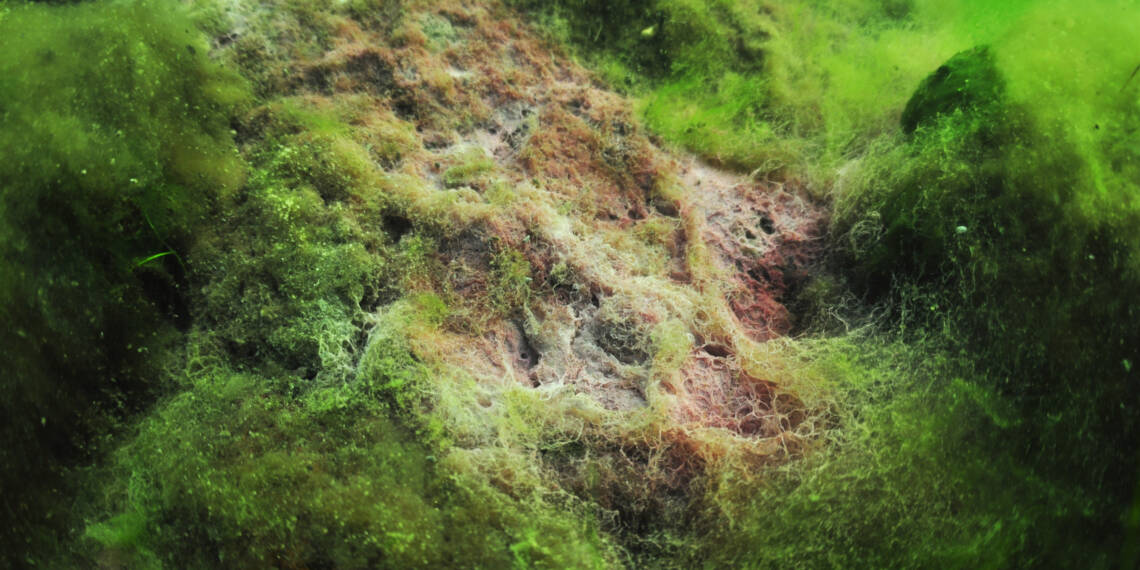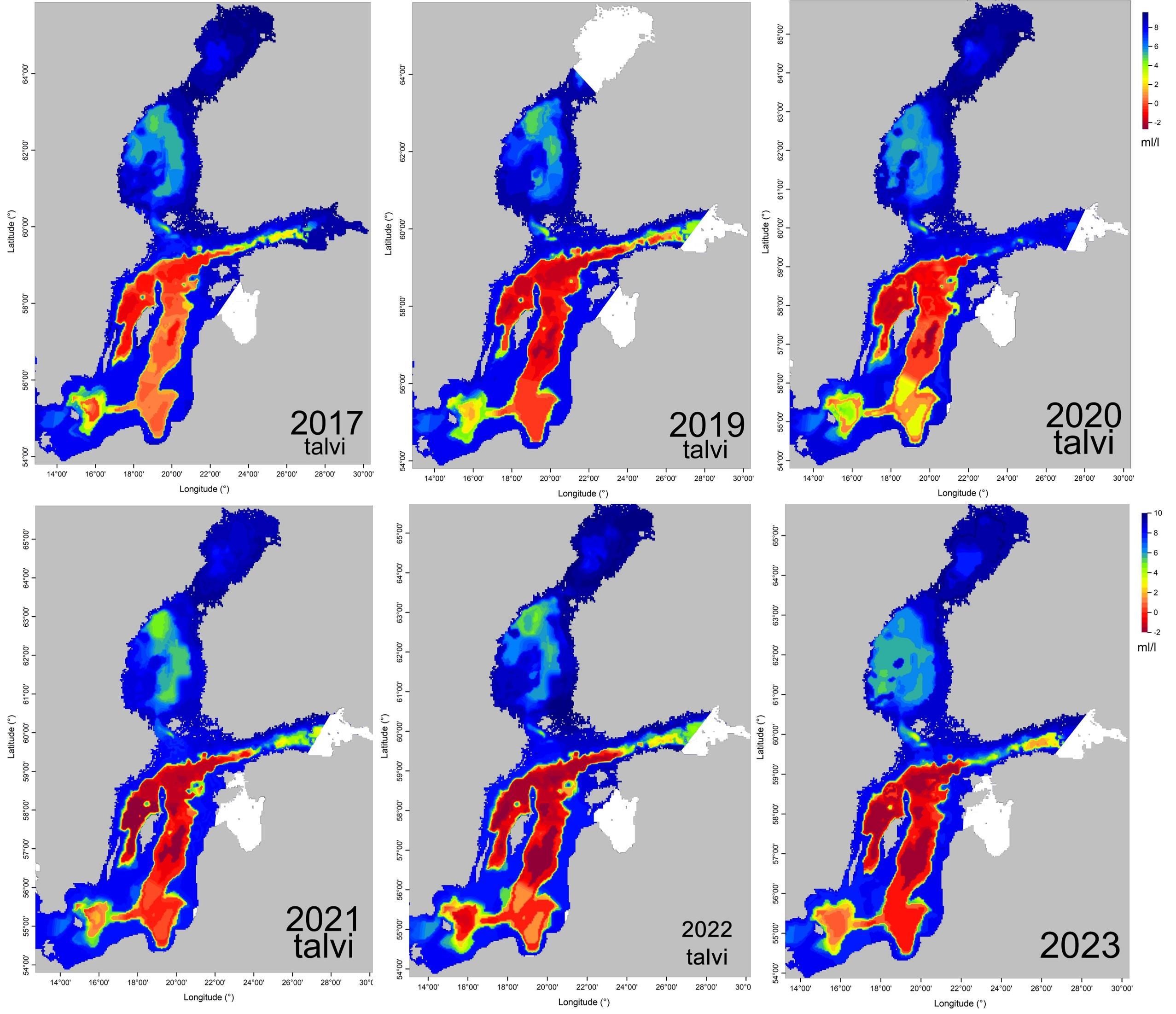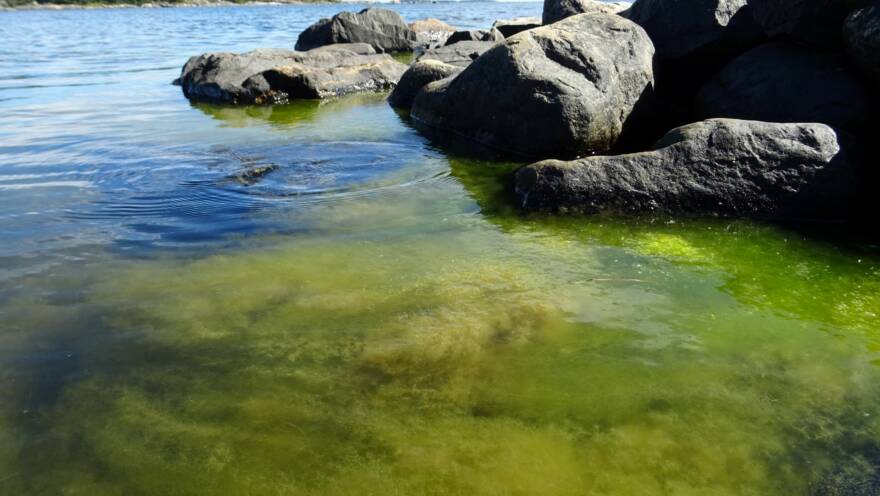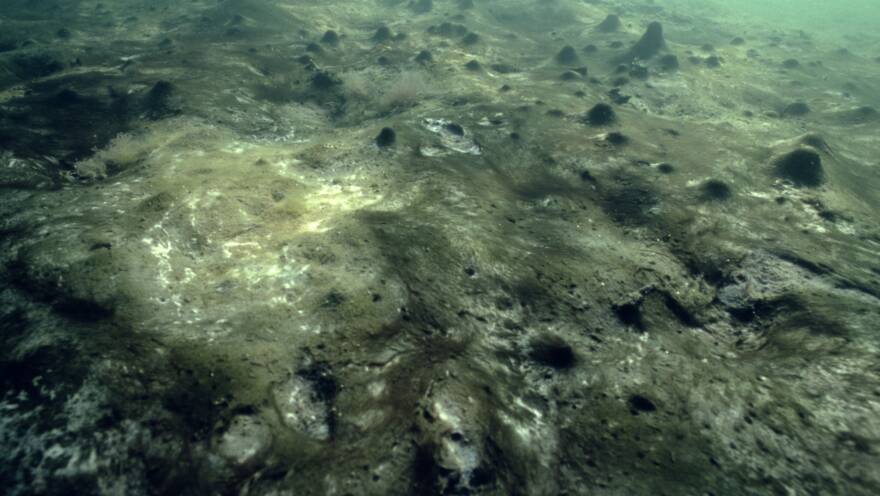
Anoxic bottoms are indirect consequences of eutrophication
The Baltic Sea has always had anoxic bottoms, but eutrophication intensifies the oxygen depletion of the seabed. The depletion of oxygen and the formation of hydrogen sulphide eliminate all higher organisms. As a result, benthic animals die and fish disappear. The extent of the anoxic area fluctuates with the salt pulses from the Atlantic and has been increasing in the 21st century.
Saltier water is heavier than fresh water. Therefore, it sinks to the bottom of the sea. In the deep basins of the main basin of the Baltic Sea and in the western Gulf of Finland, there is a water layer from about 60 meters depth to the bottom, with a significantly higher salinity than the surface water.
Due to the density differences between salt and fresh water, the water layers do not mix. As a result, oxygen does not travel from the surface water to the deep water. In the stagnant deep water, biological decomposition processes quickly consume the remaining oxygen. Once the oxygen is depleted, toxic hydrogen sulphide begins to form on the seabed.
Eutrophication intensifies oxygen depletion of the seabed
Eutrophication increases the amount of algae mass in the surface water. When there is a lot of phytoplankton, much of it remains uneaten. Dead algae cells sink to the bottom, where benthic animals and decomposer microbes work to break it down. In the process, they consume the oxygen in the bottom water. As decomposition activity accelerates, oxygen is depleted even faster from the seabed, leading to oxygen depletion.
In coastal waters without stratification, oxygen problems also occur in local depressions. Here, eutrophication is the underlying cause of anoxia.

The extent of anoxic areas varies with the salt pulses from the Atlantic
Anoxia is particularly a problem in the deep basins of the central Baltic Sea. There is a large anoxic area that, under suitable conditions, can extend to the Gulf of Finland and the Archipelago Sea.
In the Bothnian Sea, underwater sills isolate it from the deep waters. Therefore, there are no anoxic bottoms in the Bothnian Bay and the Quark, but the deep bottoms are oxygenated, and the benthic fauna is diverse. However, the slowly progressing eutrophication has also led to a gradual decline in oxygen levels in the Bothnian Sea. The condition of the seabed in the Bothnian Sea has also deteriorated, especially near the coast.
The extent of the anoxic area varies with the occurrence of salt pulses. A salt pulse refers to the phenomenon where a large amount of salty water flows through the Danish Straits into the Baltic Sea. At the same time, it brings oxygen to the bottom of the Baltic Sea. The heavy salty water sinks to the bottom and displaces the low-oxygen water in the deep basins. Salt pulses improve the oxygen situation of the seabed and reduce the extent of the anoxic area.

In the 21st century, there have been only a few salt pulses so far. In 2014, the third largest pulse ever occurred, followed by medium-sized pulses in 2015, 2016, and 2023. However, the condition of the deep basins of the Baltic Sea had already deteriorated so much that even these pulses only improved the situation for a short time.
Anoxic bottoms have expanded in the 21st century
The occurrence of anoxic bottoms has increased significantly in the 21st century. This is due to the general eutrophication of the Baltic Sea and the decreasing frequency of oxygen-rich saltwater pulses from the Atlantic.
The oxygen situation of the bottom water in the Gulf of Finland varies greatly, even in weekly cycles. In favorable weather conditions, during strong easterly winds, low-oxygen water from the main basin of the Baltic Sea flows to the bottoms of the Gulf of Finland. Strong westerly winds, on the other hand, push bottom water out of the gulf. In this case, the outgoing water is replaced by more oxygen-rich surface water.
According to HELCOM’s indicator “Oxygen debt,” the deep bottoms of the main basin of the Baltic Sea and the Gulf of Finland have not achieved a good environmental status.
-
 Find out more
Find out moreNutrients and oxygen
-
 Find out more
Find out moreInternal loading

